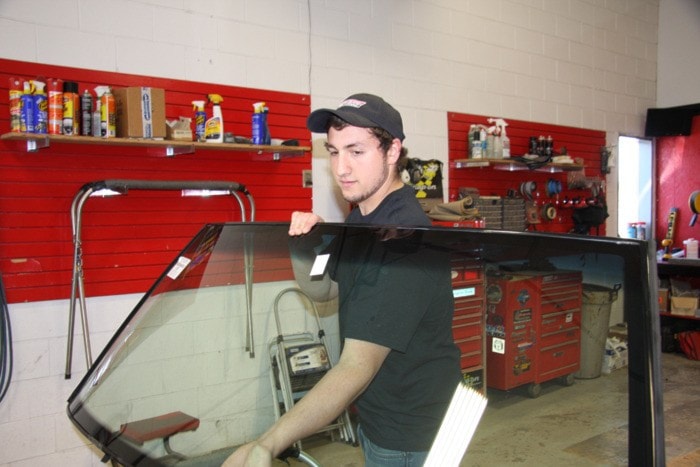As Terrace looks toward a resurgence in regional industry, and a predicted labour shortage looms over B.C., skilled workers will be in demand, say those close to the situation.
It all points to increased opportunities for northwestern young people and local schools and colleges are working together to bolster training.
Terrace Economic Development Authority economic development officer Evan van Dyk says with more than $10 billion of investment coming to the region, now is the time for students to be looking for careers in trades.
“There is going to be opportunities for jobs locally and at camp, throughout the northwest for decades to come,” van Dyk says, pointing out specific opportunities in mining, liquefied natural gas and with Rio Tinto Alcan’s smelter modernization project in Kitimat.
There are two programs currently available in Terrace – the Accelerated Credit Enrolment in Industry Training (ACE IT), and the Secondary School Apprenticeship (SSA) program.
Both offer a leg up for students by allowing them to get started on their apprenticeship requirements while still in high school.
The ACE IT program offers students the opportunity to gain 16 or 32 Grade 12 credits, Northwest Community College trade credit and completion of level 1 technical training in their chosen field.
The SSA program offers students opportunities for a combination of on-the-job and educational training to get them started on apprenticeships.
Through the SSA program, students who are 19 years and younger perform 480 hours of on-the-job training, which goes toward required apprenticeship hours, and counts as credit for four courses. It also includes a $1,000 scholarship.
Mario Furtado graduated from Caledonia Senior Secondary School last spring and participated in the SSA program on his way toward becoming an automotive glass technician.
Furtado said the program offered him recognition for hours he was already putting in at his uncle’s shop, Skeena Glass and Rhino Linings, where he has worked for the past four years.
“I’ve had all the experience, it just wouldn’t be all documented really,” Furtado says on the 480 hours he has put towards his career through the SSA program.
“It has helped a lot that way, I am on track and they know about it.”
He estimates that he will have enough hours to start the school-based portion of his education sometime next year.
“You’re pretty much on the job, you get paid, and you’re doing your work experience and getting your hours in, it’s just a great way to learn, great way to start off,” Furtado says.
He knows of at least 10 other students who signed up for the program in Terrace last year.
Furtado believes it is a good time to be involved in the automotive glass industry because of the increase in industrial activity.
“For us it’s a good thing because there is a lot of machinery moving up here. There is a lot of demand right now for glass, ” he explains. “The more things move around here the more it booms for us.”
Mike Jones is the career counsellor at Caledonia Senior Secondary School who introduced Furtado to the SSA program.
He explains that apprentices have two things to take care of – work based training and technical training.
“A student who has both is probably sitting in a pretty good place to stay in the community,” Jones said.
He says skills learned here now will be in demand as industrial activity takes off.
“If you have a welder with Johnny’s Welding, you’re going to have a welder with a camp or a pipeline that is coming,” Jones explained.
He says students going through apprentice-type programs will have the kind of work they want.
“We won’t need to worry about pro-actively keeping kids (in the community) because the economy, as it improves, will keep those students,” Jones said.
Jones adds there has also been a mental shift in the past few years about how trades are perceived by students and parents.
“The trades are starting to be looked on as equal to or better than university and college,” Jones said.
Trades students also have the chance to earn money while in their programs, meaning they have the chance to start their careers without the challenge of paying off large student loans.
“Depending where you are working and what your trades are, the sky is the limit in some cases,” Jones says about financial opportunities.
Provincial jobs minister Pat Bell in a recent media scrum said the number of jobs available will exceed the number of workers available by 2016.
“In other words within the next five years we expect to have more jobs than we have people to fill those jobs,” Bell explained,
He says the largest number of help wanted signs will be in areas of sales and service, business occupations as well as trades including heavy equipment operators.
“There will be an emphasis on the need for post secondary education with more than three-quarters of the up and coming jobs requiring at least some level of post secondary education,” Bell continued.
Jones agrees, saying that as technology evolves and changes, students will need continued training in science, engineering and math to keep up with workplace demands.
